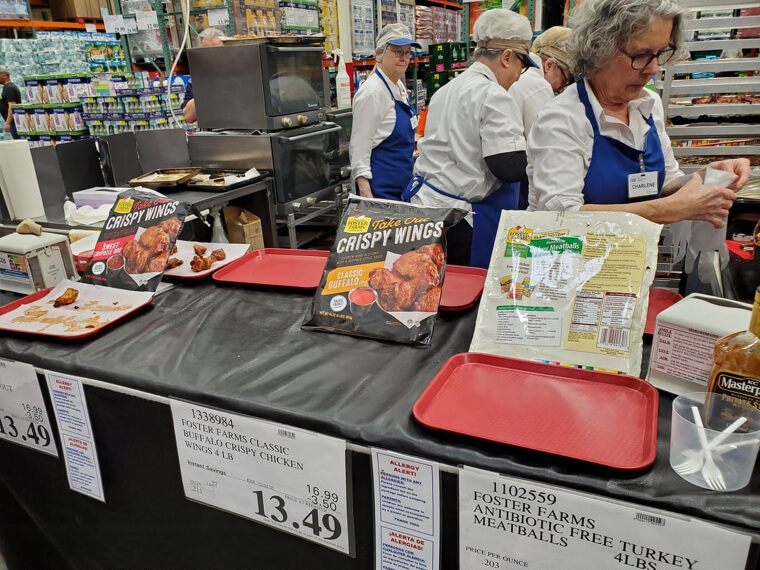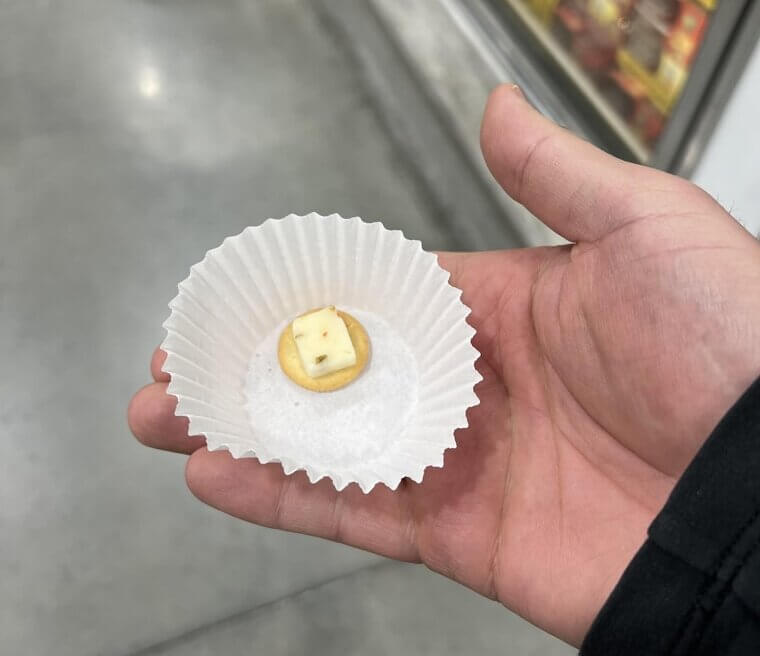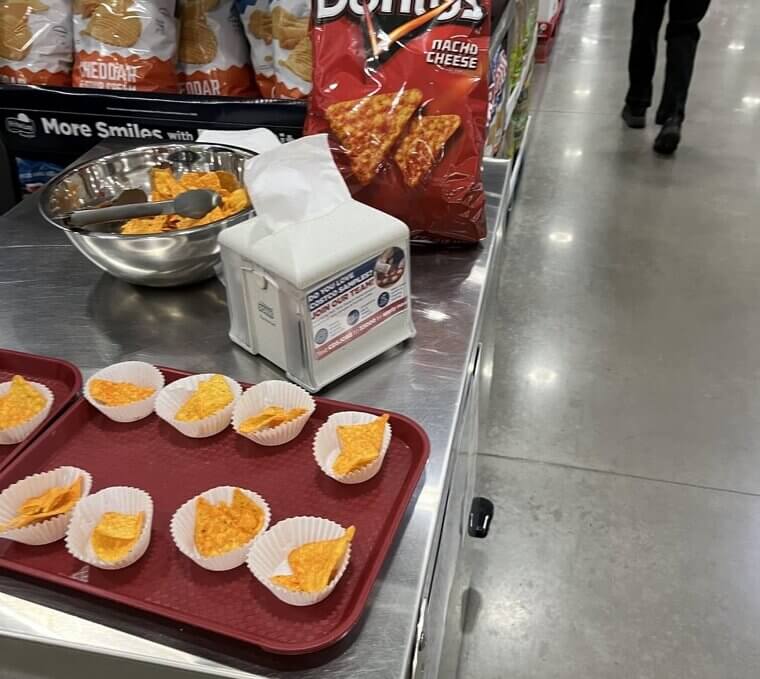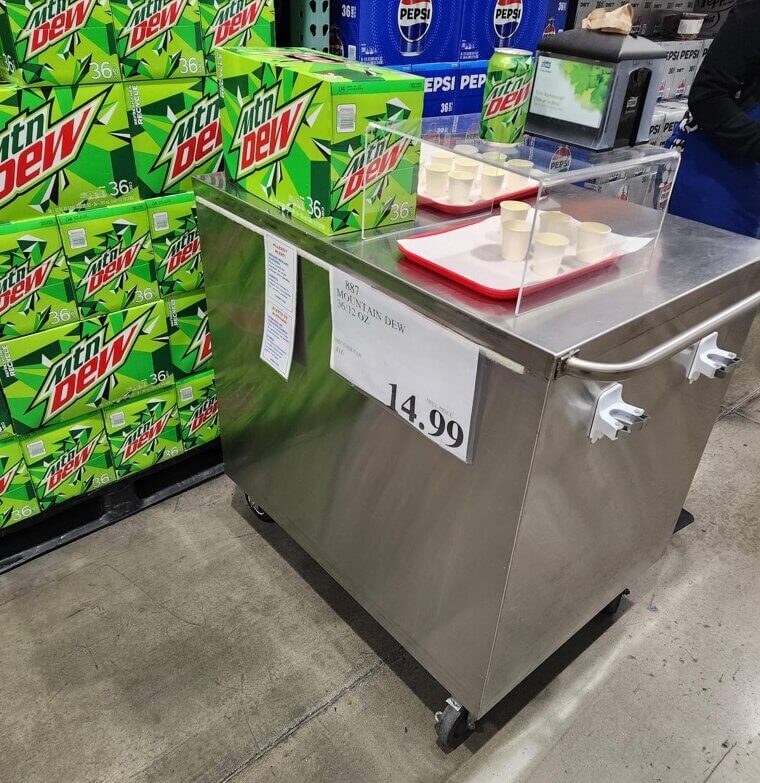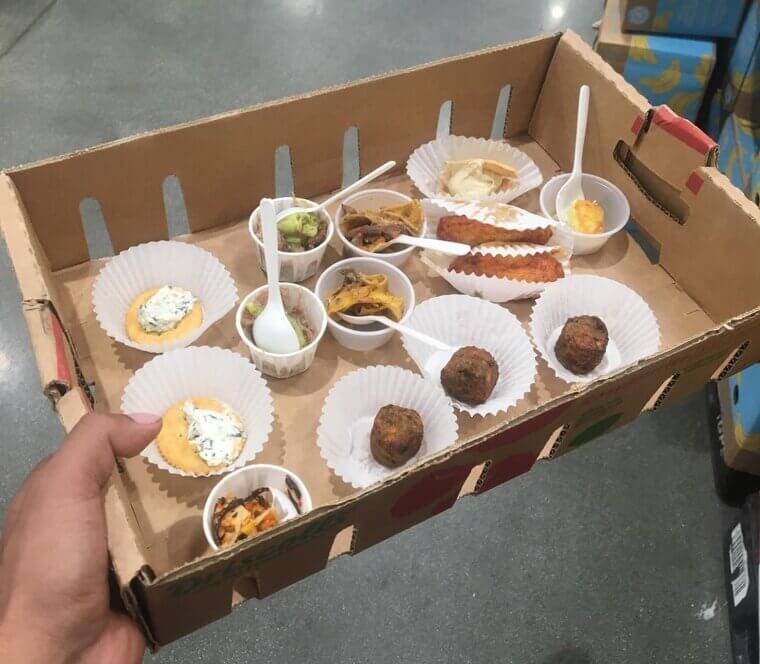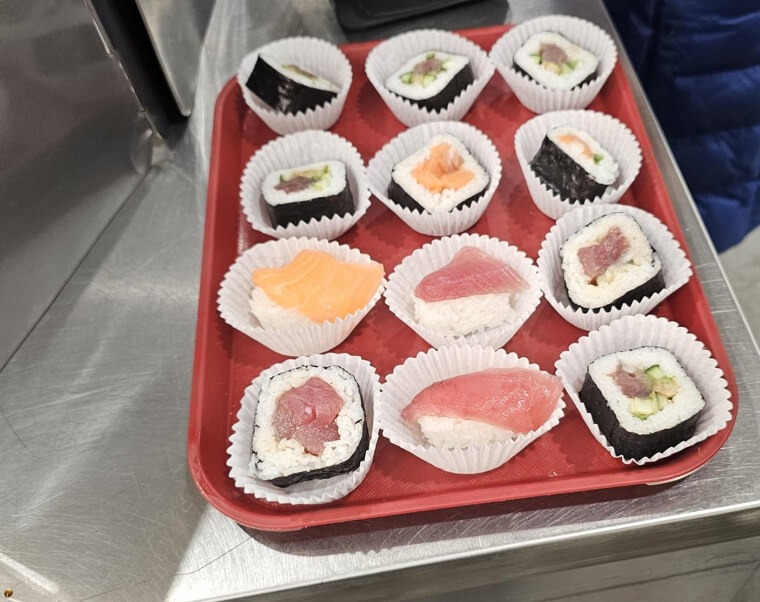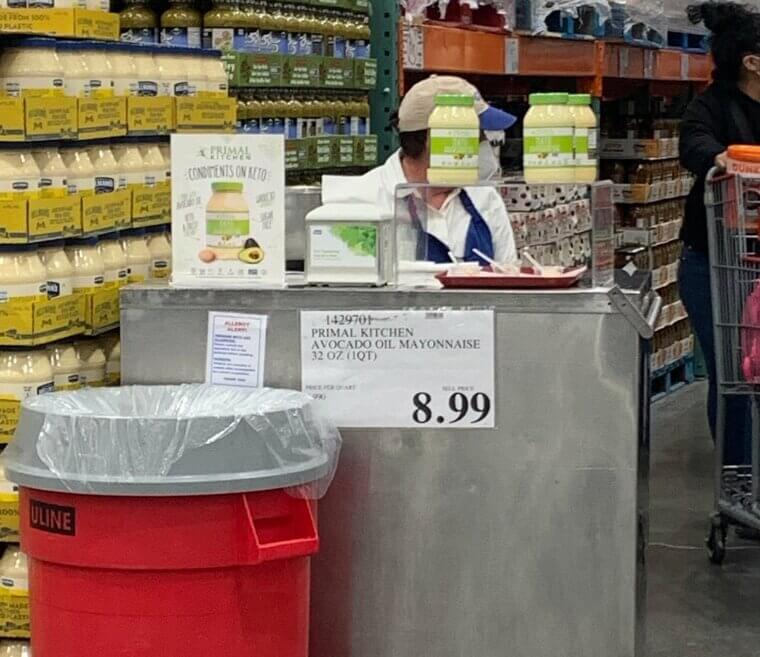Chicken Wings Offered on Open Sample Plates
Chicken wings make frequent appearances at Costco sample tables, especially during game day promotions. They smell amazing and pull in customers quickly, which is exactly why experts tend to avoid them. Wings are handled a lot behind the scenes, and once they are cooked and cut into smaller pieces for sampling, the risk begins to climb. Staff often prepare big batches at once, then bring them out in small amounts. That means some pieces have already been sitting for quite a while before they ever reach the table. The sauce can hide dryness or signs that the wing has cooled more than it should. Customers picking and choosing pieces can accidentally touch others, and kids often reach toward the tray with fingers that have just held something sticky. Because wings require careful handling all the way from prep to serving, the open plate method is simply too uncontrolled for food safety specialists.
Cheese Cubes From the Deli Tray
Cheese cubes are one of the most common samples in any grocery store, especially near deli counters or gourmet sections. They look simple and safe, yet food safety experts usually skip them. Once a block of cheese is cut into dozens of pieces, every exposed surface becomes an open invitation for bacteria. These cubes often sit out for long periods, especially on slower days. The store might replenish the tray on top rather than starting fresh, so older cubes remain underneath. Many customers hover over cheese trays while talking or reaching for crackers, and that creates plenty of opportunities for airborne droplets or stray touches. Cheese also begins to sweat as it warms, which changes both texture and safety. The glossy look that appears innocent is usually a sign that the cheese has been sitting out too long. Experts recommend buying a small wrapped wedge instead and slicing it fresh at home.
Tortilla Chips in Open Bowls
Tortilla chips might seem harmless because they are dry and shelf stable. The real problem is not the food itself but the environment around it. Open bowls placed on sample tables get touched by dozens of people, especially kids who grab with their hands instead of using the small tongs. Many shoppers drift past and take a handful without thinking, which means any germs on their fingers move directly onto the chips. Dust, crumbs, and stray sneezes also fall into these bowls because they are usually uncovered. Even though chips do not spoil easily, their exposure to unknown hands makes them risky. Experts always skip communal dry snacks for this reason. If a store wants to offer chips safely, small sealed cups or pre portioned bags are the only reliable method. Any open bowl of chips becomes questionable the moment the first crowd arrives.
Caviar on Tiny Crackers or Pancakes
Caviar samples appear in upscale supermarkets during holiday seasons or special promotions, usually served on little crackers or spoonfuls handed out near the seafood counter. Food safety experts steer clear of them because caviar is extremely temperature sensitive. It must remain cold from the moment the tin is opened, yet samples often sit at room temperature while staff focus on chatting with customers. Once the eggs warm, their delicate structure breaks down quickly and bacteria can grow faster than most shoppers realize. The salty flavor and shiny appearance also make it hard to tell whether the caviar has been sitting out too long. Customers often lean in very close to inspect these samples, which increases the risk of airborne contamination. Since stores may reuse opened tins across several sampling periods, there is no simple way to know how long the caviar has been exposed. Experts agree that caviar is best enjoyed from a sealed, freshly opened container, not from a sample spoon surrounded by curious shoppers.
Juice Poured Into Tiny Open Cups
Juice samples appear most often in the produce section or near specialty drinks. Staff pour small cups in advance and leave them on the table so customers can grab and go. Experts avoid them because the cups are completely uncovered. Airborne particles from shoppers walking by can land directly in the juice, and kids often breathe or cough very close to the trays. Many stores pour large batches at once, which means some cups sit much longer than they should. Fruit juices with pulp spoil quickly when exposed to warm temperatures. The sugar content also attracts gnats and other small pests, even indoors. Since the cups look identical whether poured five minutes ago or forty minutes ago, there is no way to judge freshness. Experts recommend skipping these and choosing sealed bottles or cans instead.
Mini Meatball Samples in Warming Trays
Meatballs are a popular sampling item because they smell inviting and encourage quick impulse purchases. The problem is that warming trays often create uneven temperatures. The top layer stays warm, but the bottom pieces can cool quickly. Once meat falls below the safe holding temperature, bacteria thrive. Many stores prepare large batches for samples and rotate them slowly. That means your free bite could be from a batch that has been reheated, cooled, and reheated again. The texture gives clues. A meatball that looks shriveled or overly firm has usually been sitting out longer than recommended. Sauce can hide dryness, making it harder to know how long it has been held. Food safety experts prefer meat that is cooked and served immediately, not displayed in big trays for unpredictable lengths of time. For a safer option, buy a sealed package and heat it at home.
Precut Sushi Pieces
Sushi samples do show up in some Costco stores, usually when stores want to promote their in house sushi counter. Food safety experts almost never take them. The problem starts the moment sushi is cut and placed on a sample tray. Costco sushi already spends time in refrigerated cases before employees prepare samples, and once it hits the table, the temperature climbs quickly. Rice warming even slightly increases the risk of bacterial growth, especially because sushi rice contains vinegar and moisture that create ideal conditions for microbes once left out. Raw fish warms even faster, and many stores place the samples on simple plastic trays with no cooling underneath. Staff also prepare the pieces in batches, so some samples may have been sliced far earlier than you think. Customers often hover very close to sushi trays, which adds the concern of airborne droplets. Experts say if you want to taste Costco sushi, buying a fresh roll from the refrigerator is far safer than sampling precut pieces on display.
Condiment Cups With Mustard, Barbecue Sauce, or Flavored Mayo
Condiment samples appear in many supermarkets, especially near grilling displays or seasonal promotions. Staff usually squeeze mustard, barbecue sauce, or flavored mayo into tiny open cups and set them out with pretzel sticks or crackers. Food safety experts avoid these because condiments that are normally chilled or sealed behave very differently once exposed to warm air. Flavored mayos and aioli blends are especially risky because they contain eggs and oils that spoil quickly without refrigeration. Even sauces like barbecue or mustard, which seem safe, can develop issues once left uncovered. Customers drip crumbs into the cups, touch the rim while grabbing a pretzel, or accidentally bump the tray. Staff often top off the cups instead of replacing them, so older sauce stays beneath newer portions. The cups also sit directly under store lighting, which causes separation and thinning. Experts say condiments belong in sealed bottles, not open tasting cups surrounded by dozens of shoppers.

